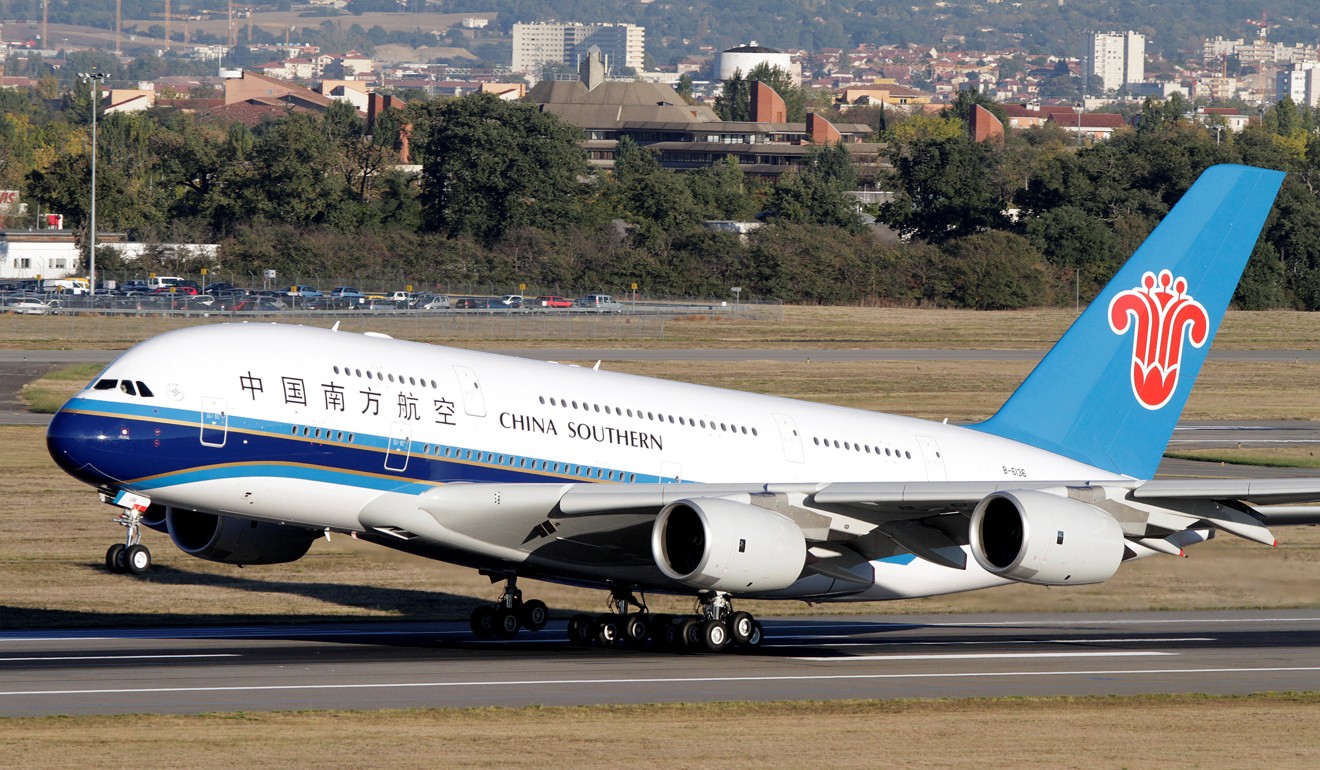
End of the A380 superjumbo: Airbus to stop making world’s biggest passenger jet in 2021
- Production of the jumbo jet will end by 2021, after the A380’s biggest customer, Emirates, and a handful of remaining buyers receive their last orders

Loved by passengers, feared by accountants, the world’s largest airliner has run out of runway after Airbus decided to close A380 production after 12 years in service due to weak sales.
The firm said it would stop deliveries in 2021 of the A380, which has been in operation for more than a decade, after Dubai-based carrier Emirates reduced its total order of the model by 39 planes.
It marks an ignominious end to a bold bet on how millions of people would travel in the future, as airlines struggled to fill a plane capable of carrying anywhere from 500 to 850 people.
“Following a review of its operations, and in light of developments in aircraft and engine technologies, Emirates is reducing its A380 order book from 162 to 123 aircraft,” Airbus said in a statement.
“As a consequence and given the lack of order backlog with other airlines, Airbus will cease deliveries of the A380 in 2021.”
Airbus had been forced to slow A380 production in recent years before warning in January 2018 that the programme could be scrapped if no new orders came in.
Just days after this announcement, the company appeared to get a lifeline with the latest Emirates deal, but last month Airbus admitted the airline might now be reconsidering.
In Thursday’s statement Airbus said it would deliver the last 14 A380s to Emirates over the next two years, adding that the airline had ordered 70 smaller planes from the manufacturer.

Emirates’ decision means Airbus has “no substantial A380 backlog and hence no basis to sustain production, despite all our sales efforts with other airlines in recent years”, Airbus Chief Executive Officer Tom Enders was quoted in the statement as saying.
There isn’t a single US carrier that uses the A380, Chinese airlines have only bought the model in low numbers, and Japan – traditionally a big buyer of the Boeing 747 – has only recently taken delivery of its first A380.
Qantas formally cancelled an outstanding order just last week, and carriers including Air France have pared back their commitments.
Airbus also posted its earnings for 2018 on Thursday, reporting a rise of 29 per cent in net profit to €3 billion (US$3.4 billion).

The company said it would deliver between 880 and 890 new commercial planes this year, adding that it was allocating €436 million to the A400M military transport programme.
Airbus had faced scepticism over the A380’s future since the 1990s, when it began to envision a competitor to the hugely popular 747 from US archrival Boeing.
The conglomerate, long held up as a shining example of pan-European industrial cooperation, suffered a series of costly delays before the A380’s first commercial flight by Singapore Airlines in 2007.
Production problems and cost overruns in the billions of euros continued to plague the project, forcing Airbus to report its first-ever annual loss for the 2006 financial year.
Airbus stood by the A380 even after it was slammed by the global financial crisis of 2007, when airlines started having second thoughts about owning huge planes that were profitable only when filled to the brim.
Boeing by contrast pointedly dismissed Airbus’s theory that airlines wanted huge transporters serving a handful of global hubs and focussed instead on its midsize 787 Dreamliner.

The A380 is capable of carrying more than 800 passengers, but most airlines choose to transport no more than about 500 people, instead decking out the cabin with fancy features from in-flight bars to showers and multi-room suites that come with flourishes like butlers and sofas.
Such fripperies were a hit with passengers, who often went out of their way to book a flight on the A380, which promised a more spacious, quieter, more luxurious flight experience than older long-distance models.
At a time when flying had lost its jet-age mystique and budget carriers sought to cram as many people onto a plane as possible, the A380 offered a throwback to an era of stylish travel, with plush cabin layouts and free-flowing champagne.
But in the end, it wasn’t passenger support, but the lack thereof from airlines that hastened the A380’s demise.
Like Concord, the supersonic jetliner that inspired a generation of plane-spotting fans, the A380 was brought back down to earth by the hard truths of commercial board-room economics that gained the upper hand over popular aviation enthusiasm.
Agence France-Presse, Reuters, Bloomberg